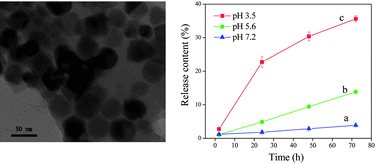Bacterial magnetic nanoparticles as drug carriers
Abstract
Magnet

* Corresponding authors
a
Key Laboratory of Mesoscopic Chemistry of MOE and School of Chemistry and Chemical Engineering, Nanjing University, Nanjing University, Nanjing, P. R. China
E-mail:
linguo@nju.edu.cn.
Fax: +86 25 83317761
Tel: +86 25 83592369
b State Key Laboratory of Coordination Chemistry, Nanjing University, Nanjing, P. R. China
c State Key Laboratories for Agro-biotechnology and College of Biological Sciences, China Agricultural University, Beijing, P. R. China
Magnet

 Please wait while we load your content...
Something went wrong. Try again?
Please wait while we load your content...
Something went wrong. Try again?
L. Guo, Ji Huang, X. Zhang, Y. Li and L. Zheng, J. Mater. Chem., 2008, 18, 5993 DOI: 10.1039/B808556K
To request permission to reproduce material from this article, please go to the Copyright Clearance Center request page.
If you are an author contributing to an RSC publication, you do not need to request permission provided correct acknowledgement is given.
If you are the author of this article, you do not need to request permission to reproduce figures and diagrams provided correct acknowledgement is given. If you want to reproduce the whole article in a third-party publication (excluding your thesis/dissertation for which permission is not required) please go to the Copyright Clearance Center request page.
Read more about how to correctly acknowledge RSC content.
 Fetching data from CrossRef.
Fetching data from CrossRef.
This may take some time to load.
Loading related content
